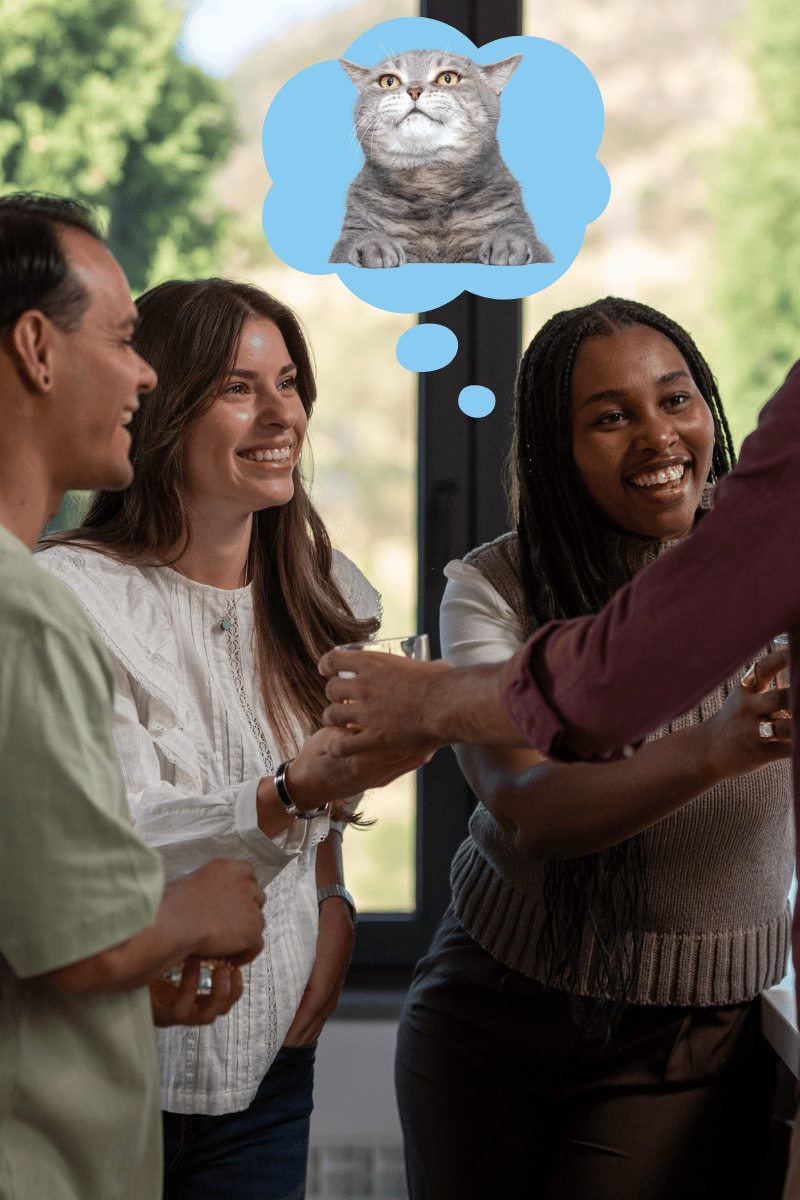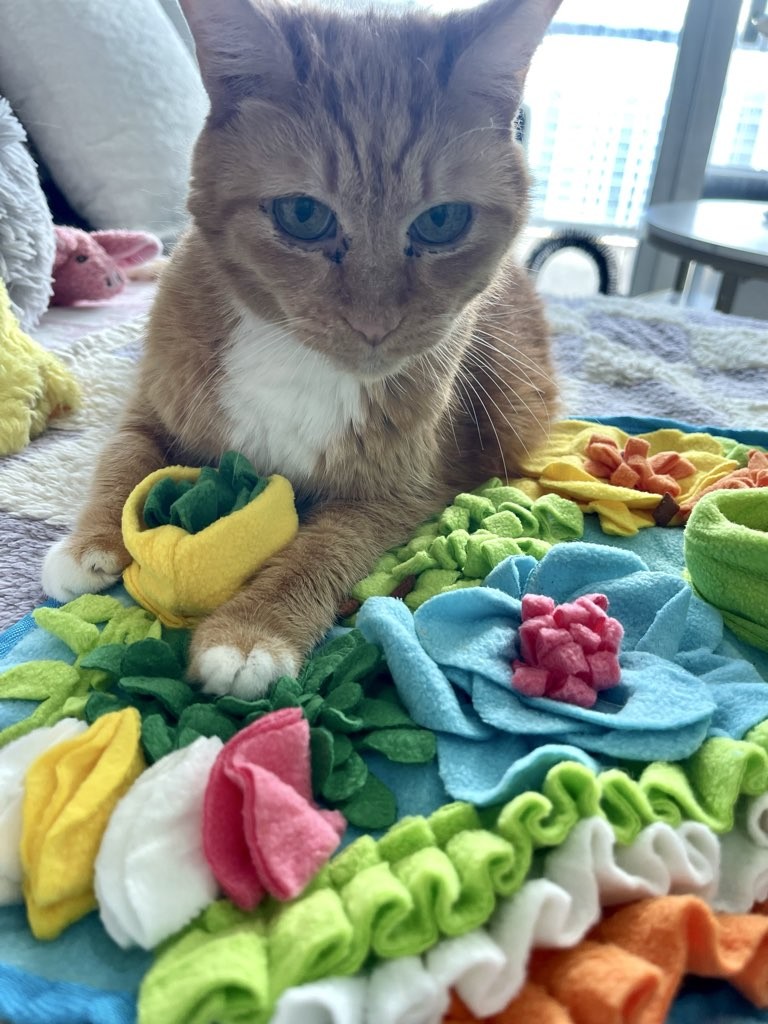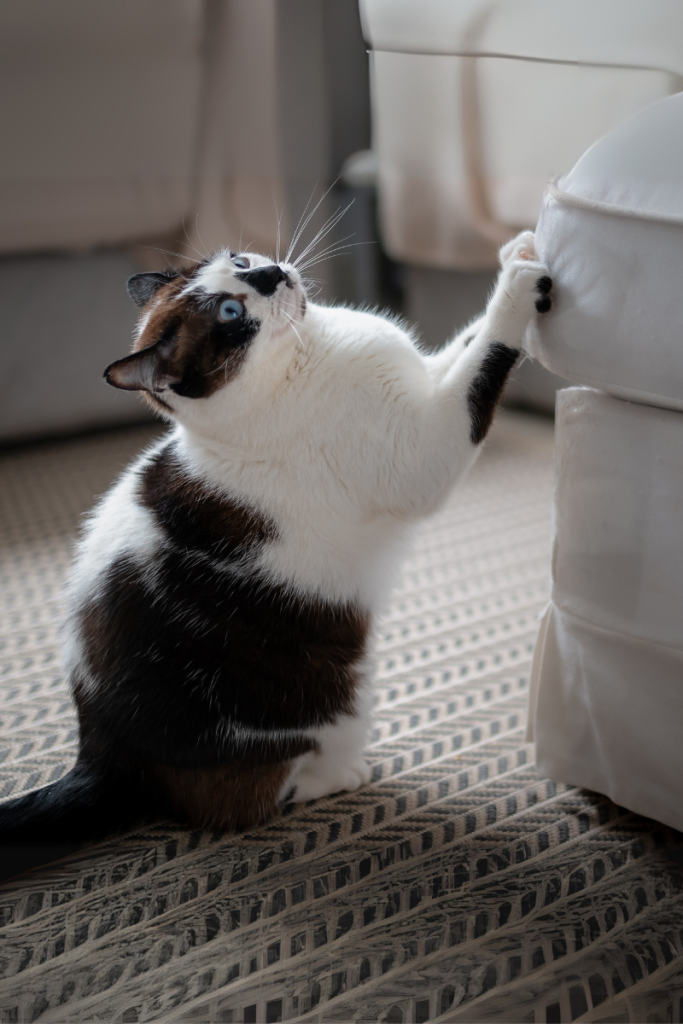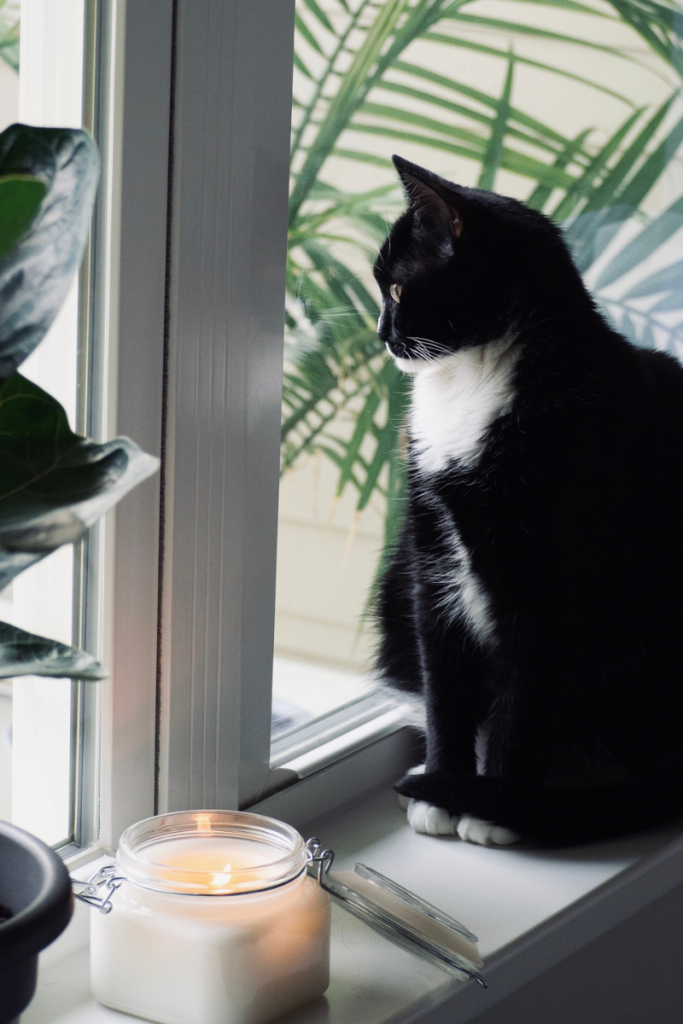When the Holidays Feel a Little Too Full

The holidays bring laughter, music, and the clinking of glasses. But for many cats, that same excitement can feel like chaos. Between guests coming and going, new scents filling the air, and spaces rearranged for décor, even the most confident cats can find themselves overwhelmed.
As cat parents, we look forward to celebrating with the people we love — but it’s important to remember that to our cats, “home” feels different when it’s full of new sounds, smells, and energy.
For some, that can create holiday stress.
The Holidays Through a Cat Sitter’s Eyes
I’ve seen this firsthand — both in the cats I care for and in my own home. This October marked one year since I officially founded Miami Cat Sitting & Home Care and transitioned to being a full-time professional cat sitter.
The lifestyle of a small business owner is both challenging and incredibly rewarding. I’m grateful every day to support Miami cat parents and their companions full-time.
Caring starts at home — not only for my clients’ cats but also for myself (managing fear, anxiety, and stress applies to people too) — and of course, for my own cats: Cora, Lucy, and Arthur.
This year, as part of becoming a Fear Free Certified Professional, I learned just how much our routines (and the changes in them) affect feline behavior.
When my schedule got busy — sometimes 10 or more visits a day — I began noticing subtle shifts at home.
Arthur, the newest addition to my family, started scratching the wood furniture. Lucy, my youngest, grew quieter and stopped coming when called for dinner. And Cora, my first Miami adoption, became attention-seeking in less-than-ideal ways — knocking objects off surfaces, swatting at the others when they received affection, or even guarding me by blocking their access.
These were early signs of stress, not misbehavior.
Because of my Fear Free training, I recognized these subtle cues as a reflection of change in their world. And while I can’t sit my cats down for a “heart-to-heart” about why Mom’s working late, I can help them adjust by keeping their environment predictable and calm.

That’s really what this post is about — learning how to recognize and respond to those subtle shifts before they become stress.
Why Predictability Matters
Cats thrive on familiarity. Their sense of security is built on routine — the way their world smells, sounds, and flows from day to day.
Even small changes — like moving a litter box for guests or switching feeding times — can feel significant to them.
During the holidays, when homes fill with visitors, decorations, and new scents, it can all add up quickly.
Predictability doesn’t mean keeping everything the same — it means creating anchors of normalcy when life gets busy.
Consistent feeding times, familiar hiding spots, and gentle routines help cats feel that, no matter what’s happening around them, their world is still safe.
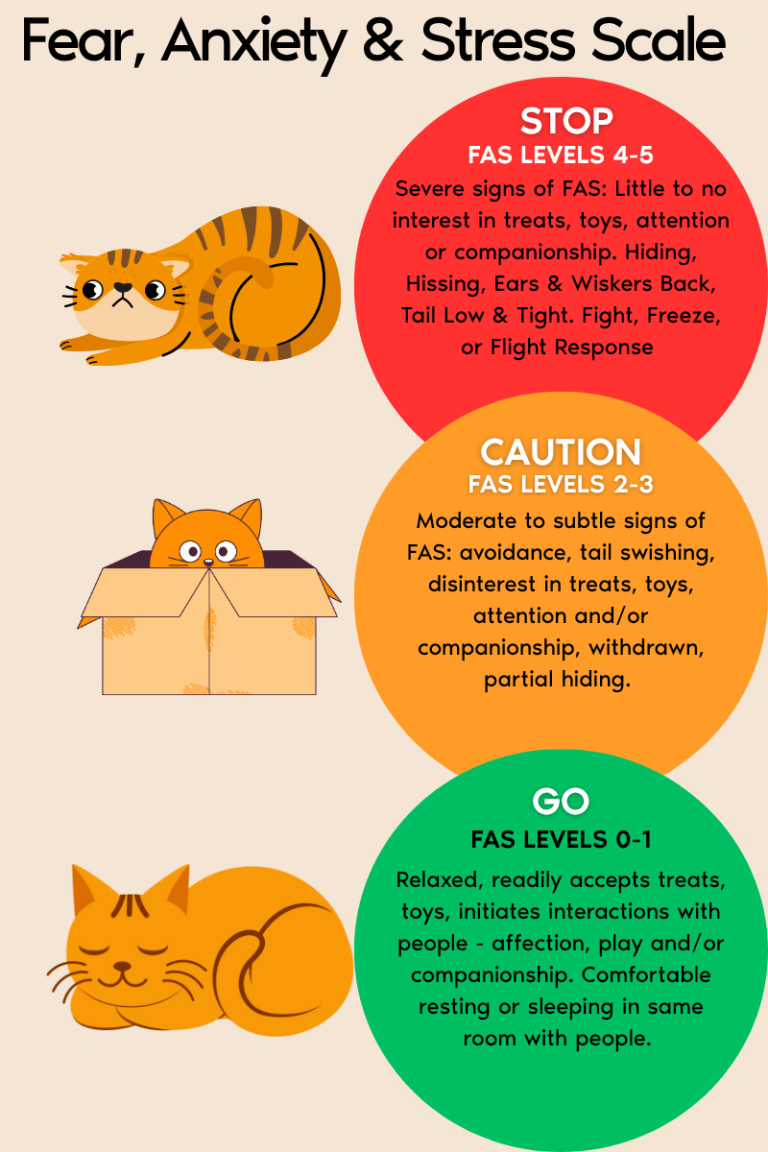
Recognizing Subtle Signs of Stress in Cats
Cats rarely show distress the way we expect. Instead, they communicate through subtle shifts in body language, expression, and behavior.
The Fear, Anxiety, and Stress (FAS) Scale helps pet professionals recognize these cues — but it’s just as valuable for cat parents to understand.
Let’s break it down into what you might observe in each stage:
Go Zone (FAS 0–1): Relaxed and Comfortable
Your cat feels secure and content. You’ll see soft, loose body language and easy engagement with their surroundings.
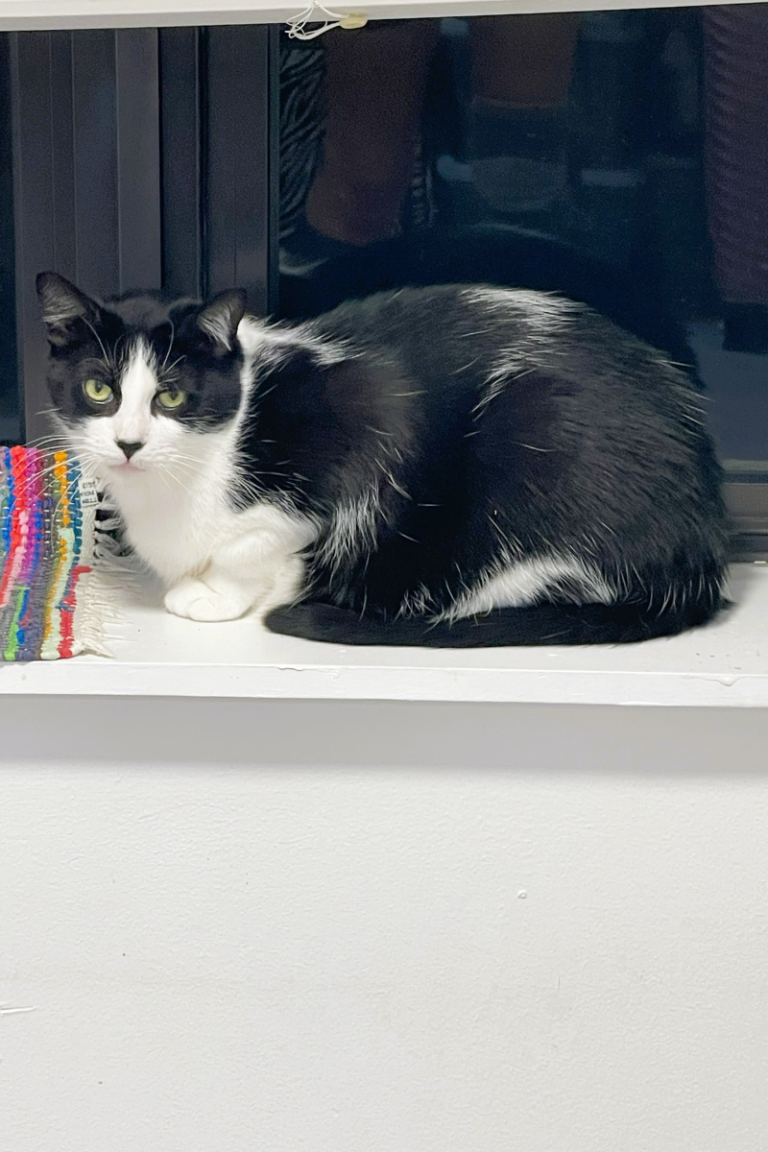
- Eyes: are soft or half-closed
- Tail: carried upright or gently curved when walking; still and relaxed when sitting or lying down
- Ears: facing forward or slightly to the side
- Whiskers: in a neutral position
- Behavior: Approaches people willingly or remains nearby without tension
- Activity: Eats treats, plays, or chooses to rest close by
- Engagement: May rub their cheeks on you or nap in the same room where people are gathered
These are all signs that your cat is comfortable, confident and feels that their environment feels safe and predictable.
Caution Zone (FAS 2–3): Watch and Wait
Here, your cat begins to feel uncertain. They’re assessing whether a situation or person feels safe before deciding how to respond.
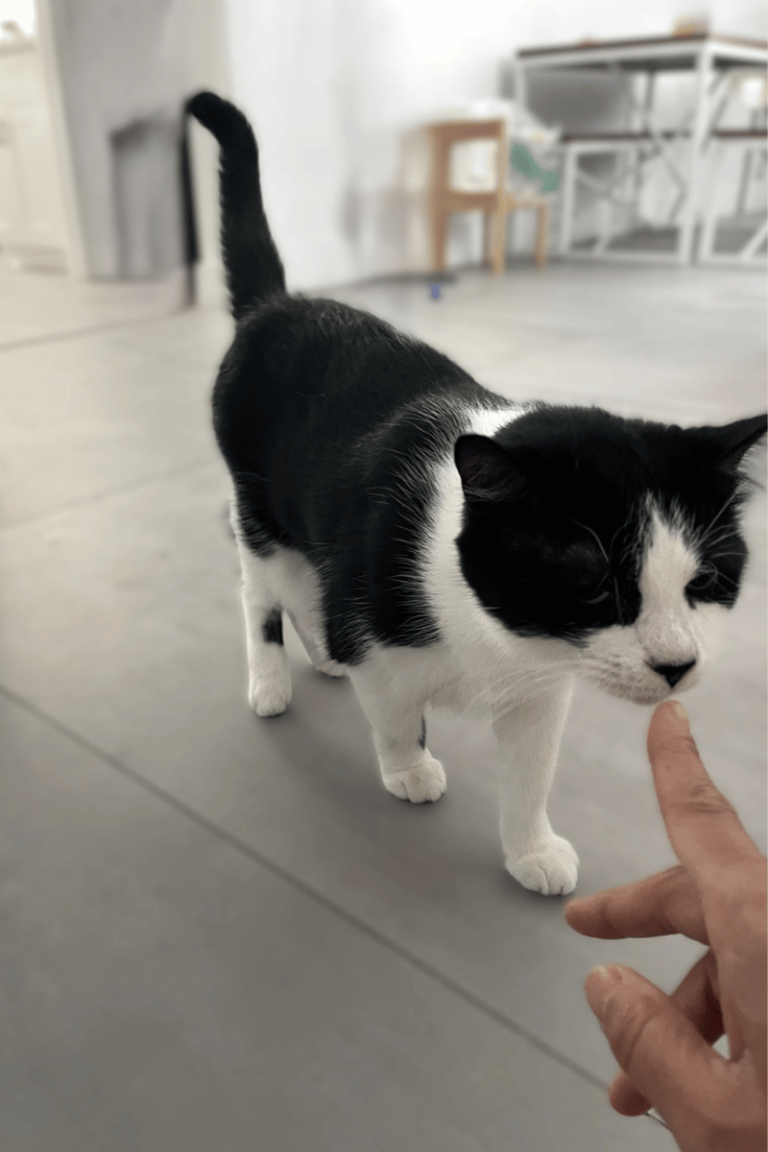
- Behavior: slight hesitation or partial avoidance with new people
- Ears: turned slightly outward or to the side
- Eyes: Pupils slightly to moderately dilated
- Tail: held lower or close to the body
- Whiskers: drawn back toward the face
- Body: may be crouched or leaning away
- Activity: Partial hiding — sitting behind furniture, hugging the walls, or peeking from under a table
- Engagement: Quieter or less interactive than usual
At this stage, your cat isn’t fearful yet — just unsure. It’s a signal to slow things down, reduce stimulation, and give them space to choose when (and how) to engage.
Stop Zone (FAS 4–5): Distressed or Defensive
In this stage, your cat feels overwhelmed and may believe escape isn’t possible. Their behavior becomes more overtly fearful or defensive.
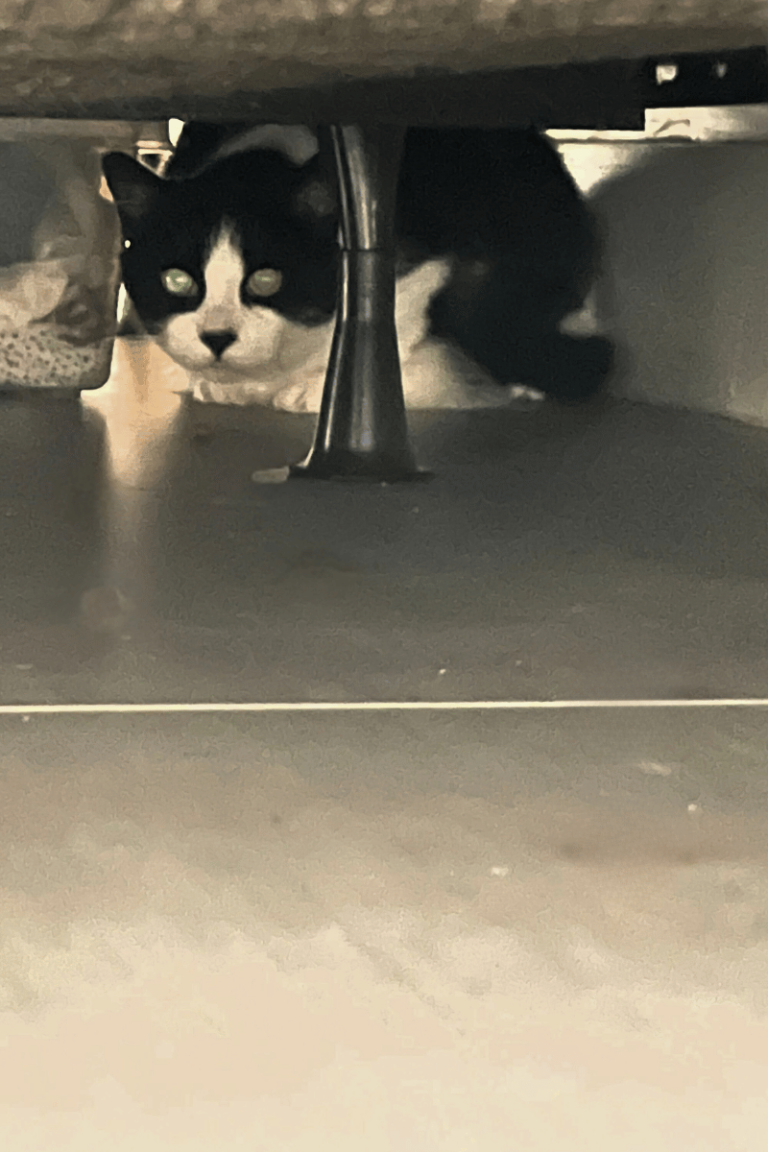
Without aggression:
- Behavior: Rapid hiding or active attempts to flee
- Activity: Pacing, restlessness, or excessive vocalizing
- Eyes: Dilated pupils
- Tail: tucked tightly to the body or puffed (“bottle-brushed”)
- Ears: pinned back
- Body: Tense, crouched posture or trembling
With aggression:
- Behavior: Growling, hissing, or lunging
- Activity: Swatting or attempting to bite
- Eyes: Hard, direct stare, dilated or pinpoint pupils
- Whiskers: pinned against the face
- Body: Lips pulled back, fur raised along the spine, may have bottle brush tail
At this point, your cat is telling you loud and clear — “I need space.”
Continuing interaction or trying to comfort them physically can make things worse. The best response is to give them a quiet, secure area where they can calm down on their own.
When Stillness Isn’t Calm: Understanding Tonic Immobility
Understanding your cat’s body language is key to recognizing early signs of stress — but sometimes, what looks calm isn’t calm at all.
It’s easy to assume that a quiet or still cat feels relaxed, yet for many, that stillness is a coping response, not a sign of comfort.
Stillness isn’t calm — it’s often fear.
This brings us to one of the most misunderstood behaviors in feline body language: tonic immobility.
You’ve probably seen it happen — a well-meaning guest or child scoops up a shy cat to “make friends,” and the cat suddenly freezes. Because the cat isn’t struggling, the person assumes they’re fine. But that stillness is actually a fear response. The cat has gone quiet because they feel trapped, and escape doesn’t seem possible.
Tonic immobility can appear during nail trims, vet visits, or even when someone tries to pet a cat who isn’t ready for contact. In these moments, the cat isn’t tolerating — they’re enduring. Recognizing the difference helps protect trust and reduce stress in the long term.
If your cat goes rigid, holds their breath, or seems frozen during handling, gently release them and give them space to reorient. Allowing them to retreat helps restore their sense of control and keeps future interactions positive.
You Can’t Cancel the Holidays — But You Can Help Your Cat Cope
You don’t have to skip the celebration to keep your cat calm — just plan ahead with their comfort in mind.
Once you know how to recognize signs of fear, anxiety and stress, the next step is to create an environment where your cat feels safe, even when routines change.
With a few thoughtful adjustments, you can help your cat navigate the season with confidence.
1. Create A Quiet Retreat
Set up a guest-free room with their familiar bed, litter box, and toys. Add soft lighting, a pheromone diffuser, and maybe some calming sounds or long play video from Miami Cat TV.
You may have noticed that the friend who’s the life of the party — the one with the big presence — is often the person who sends your cat running. That’s because new people are guests in your cat’s territory, and someone whose energy “fills the room” can feel overwhelming.
Your dog might mirror that excitement, but your cat is more likely to seek calm and space.
Recommended Calming Aids for Cats
Even the most confident cats can feel uneasy when the holidays bring guests, new scents, or changes in their routine.
These trusted calming products can help your cat relax and feel secure while maintaining a natural, Fear Free environment. They are the same products I personally use and carry in my pet sitting bag when caring for cats across Miami.
Whether I’m supporting a shy rescue, a senior cat adjusting to change, or a confident kitty meeting guests for the first time, these tools help create calm and comfort in every home.
Each one complements the tips above and supports emotional balance during times of change.
Feliway Classic Cat Calming Pheromone Diffuser
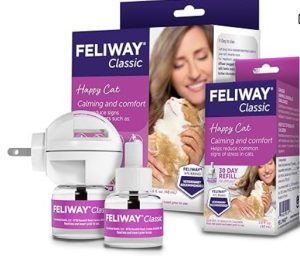
Designed to reduce scratching, urine marking, hiding, and other stress-related behaviors caused by household changes or new environments. The Classic formula mimics natural feline facial pheromones to help cats feel calm and safe in their space.
Pro Tip: Use the Classic version for environmental stress, while the MultiCat and Optimum formulas are best for introducing new pets.
Nature's Miracle Cat Calming Spray
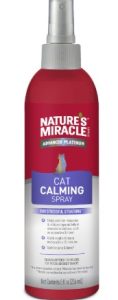
A gentle, herbal-scented spray that helps ease anxiety without sedation. Safe for use on fabrics, bedding, carriers, travel crates and clothing. This easy-to-apply option promotes relaxation and can be used before guests arrive or while traveling.
Pro Tip: I often spray this on myself — on my clothing or arms — when meeting a new cat or before nail trims and grooming. Many veterinarians use pheromone sprays on their scrubs for the same reason: it helps reduce tension and signals safety during close handling.
Bach Rescue Remedy Pet For Cats
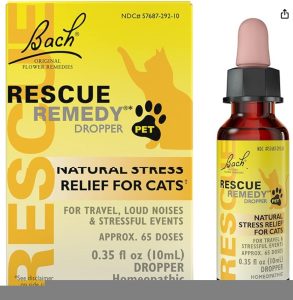
A holistic, non-sedating formula that supports overall wellbeing during stressful events such as parties, loud noises, or changes in household routine. Helps reduce stress-related behaviors like excessive vocalization, hiding, or over-grooming.
Pro Tip: Add to wet treats or food for best results or place a few drops in a water bowl — not a fountain — to provide ongoing support while you’re away.
2. Maintain Small Routines
Feed and play at consistent times, even if you’re entertaining. Familiar rhythms help anchor their sense of normalcy.
For me, this looked like ensuring Cora, Lucy, and Arthur’s basic routines stayed consistent. I made small adjustments to my visit schedule to include scheduled downtime between my morning, afternoon, and evening blocks.
Those two short breaks gave me time to pause, eat something healthy, and spend intentional, quality moments with my cats — playtime with Cora, brushing with Arthur, and cuddles with Lucy. In addition to that, I maintained their regular evening meal routine.
Most cats don’t need hours of attention; what matters most is the consistency of interaction.
These small changes made a world of difference in our home.
3. Let Introductions Be On Their Terms
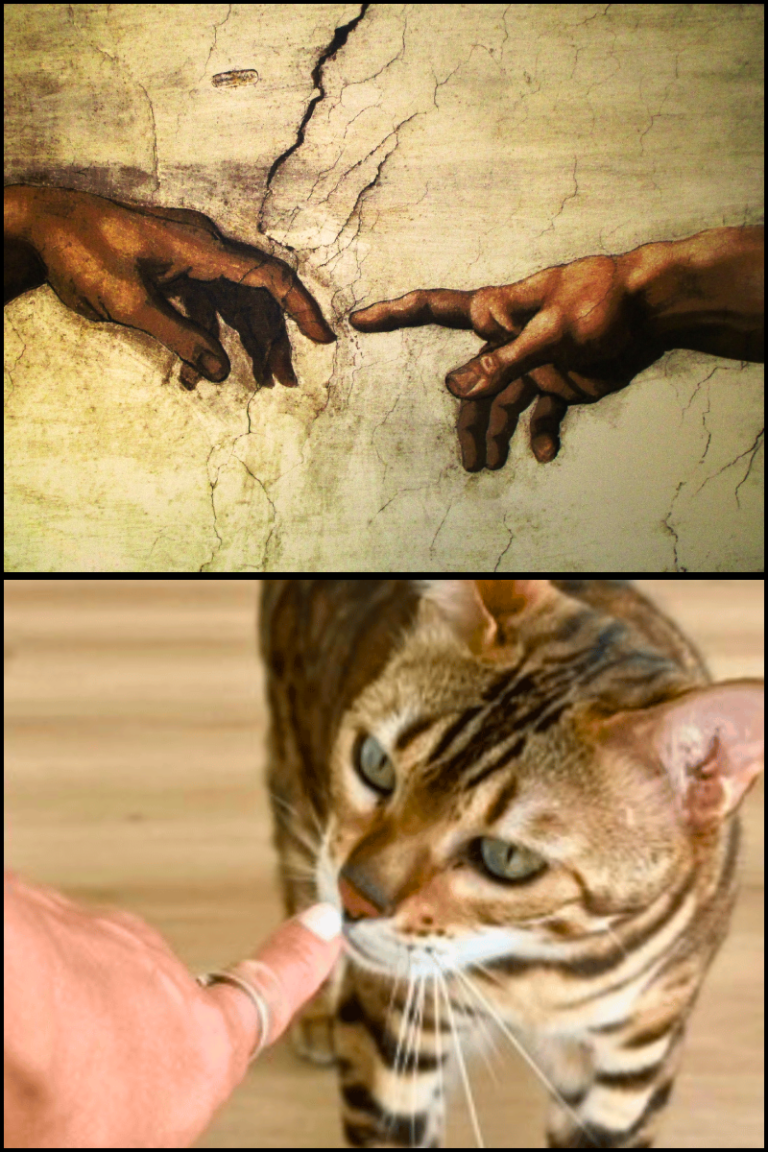
Coach guests (especially children) to let the cat come to them.
To a cat, humans are giants — and new people can be intimidating.
Have you ever noticed that the person who “doesn’t get cats” or is allergic to them is often the one cats seem drawn to?
That’s because when a person acts disinterested, they remove pressure — and to a cat, that feels safe. Cats are far more likely to investigate when there are no anticipation stressors or expectations.
Encourage guests to get down to “cat level” by sitting on furniture or the floor rather than hovering.
Avoid direct eye contact, which can feel threatening.
A relaxed posture, crossed legs, and soft hands communicate safety.
When the cat approaches, extend a finger slowly — think Michelangelo-style — to invite a sniff or gentle nose touch.
This “nose boop” is your cat’s version of a handshake.
If they nuzzle your hand, offer a chin rub or gentle cheek scratch instead of a pat on top of the head, which can feel like a grab.
Treats or wand toys can also be wonderful icebreakers but always let the cat decide when (and if) to engage.
4. Choose Professional Support When You Travel
An experienced, Fear Free Certified sitter keeps your cat’s care consistent — recognizing signs of stress early, maintaining normal routines, and providing companionship that feels safe and familiar.
Peace at Home for You and Your Cat
The holidays can be joyful and peaceful.
By recognizing early signs of stress and respecting your cat’s comfort zone, you help them stay confident through the season’s changes.

